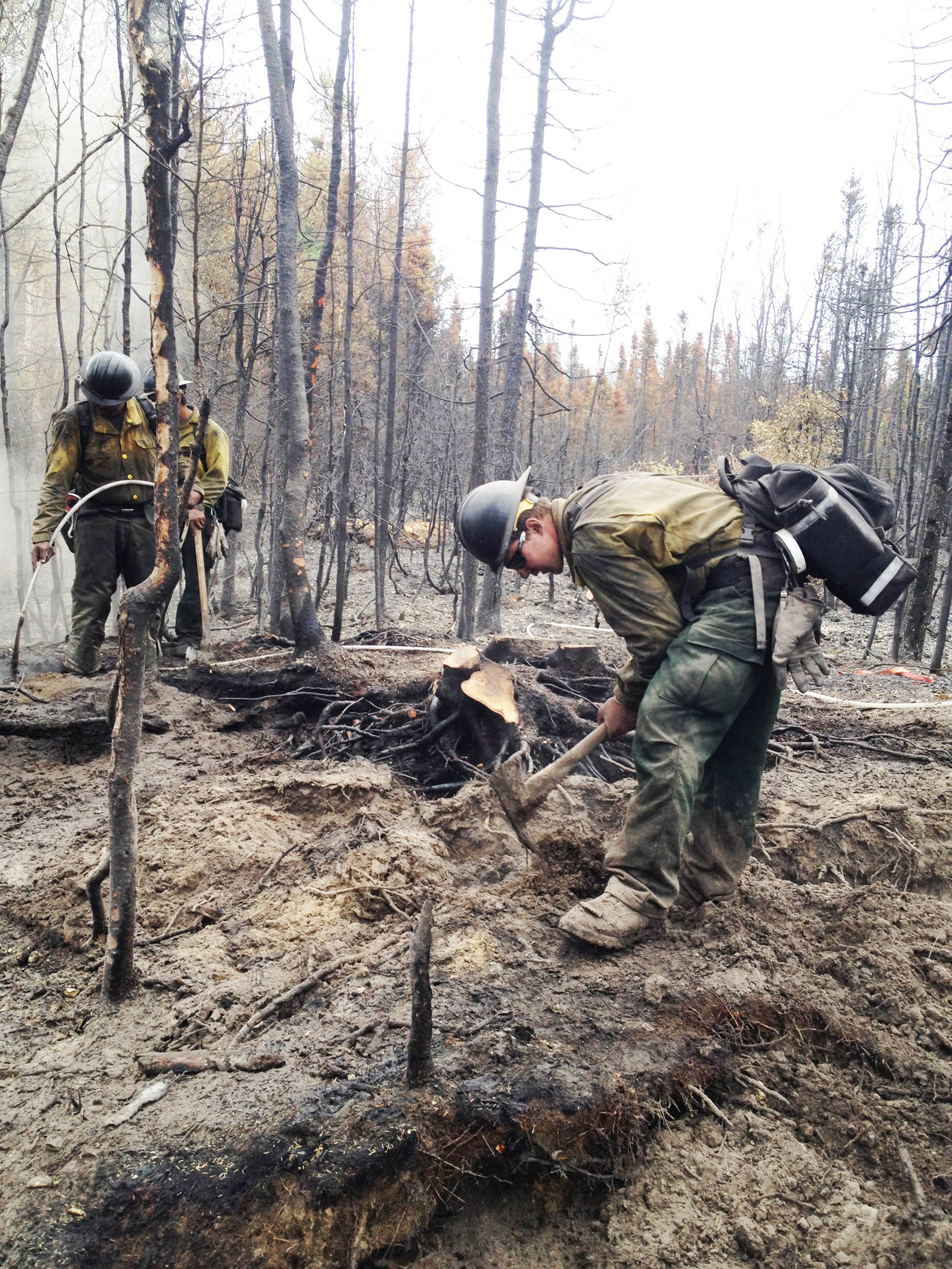An Alaska Native nonprofit wants to improve living conditions for the highly-trained wildland firefighters it supports, who spend their days tucked away on call on the Kenai Peninsula when they’re not actively fighting.
Since 2008, members of the Yukon Fire Crew have made a home on the peninsula during the fire season. On hand for local wildland fires like the Funny River and Card Street, the crew members also get called out to lend a hand in the Lower 48, but their base during the season is on a piece of land leased from the Kenai Peninsula Borough across the highway from the Central Peninsula Landfill just south of Soldotna.
Chugachmiut, a nonprofit serving tribal communities in the Chugach region, is hoping to make the base a more permanent one for its firefighting residents. The organization is seeking funds from the Indian Community Development Block Grant Program to build a brick-and-mortar camp for the 20-member crew that would include training space in addition to living quarters, said Gary Teenor, the grants administrator for Chugachmiut. The grant program provides funding for housing, community facilities or economic development through the U.S. Department of Housing and Urban Development.
The current fire camp consists of several housing trailers set up on the borough-owned land, said Nathan Lojewski, Chugachmiut’s forestry manager. There is no running water on site, and the crew members use portable toilets. Once the fire season has ended, they split up and return to their respective homes for the rest of the year.
“We haven’t been able to develop it, so our guys drink bottled water,” Lojewski said.
Chugachmiut had originally sought for the wildland hand crew to have a base in the Mackey Lake area, but residents in 2008 protested the move, and the resulting compromise was the leased borough land.
“We’ve had the trailers at the borough site, which has been adequate,” said Chugachmiut Division Director Charles Sink. “But because of the hauling water system and the (portable toilet) system … it’s been OK to have the camp, but it’s not like the general living conditions are that good.”
In 2011, Chugachmiut purchased three acres of land off of Strawberry Road in Kenai.
“What we’d like to do is to build a permanent camp there,” Lojewski said.
The organization considered developing the land on its own, but revenue that varies from fire season to fire season made the prospect of paying back the sizable loan it would have taken uncertain, Sink said.
“Nothing ever happens fast,” Sink said. “It’s taken us a number of years and through various funding cycles … to be able to save up enough funds to make a downpayment investment into the fire camp.”
Instead, Chugachmiut has partnered with the Port Graham Village Council, which Teenor said has a good history with Indian Community Development Block grants, to apply for funding jointly. The village council is the entity that would actually receive the funding — the maximum a tribal entity can apply for is $600,000 — but it would be used for construction of the camp, Teenor said.
The twist is that the camp would be located outside the jurisdiction of Chugachmiut’s service area, he said. Therefore, the nonprofit has reached out to the Kenaitze Indian Tribe and other groups on the peninsula for support.
Teenor said because the hotshots make up the only standing crew based on the peninsula during fire season, Chugachmiut is hopeful for support from the borough, residents and other peninsula entities. He said letters of support go a long way in the application process to show the potential project would be filling a need. The hotshots have been serving the peninsula on both active fires and preventative work since 2008, and Teenor said Chugachmiut’s plan for improved living conditions is the organization’s way of serving them back.
The project becoming a reality is contingent on funding availability, he said. When it comes to the Indian Community Development Block Grant Program, Teenor said the state government has its own pot of federal money that it’s working from, which is divided up among the successful applicants of the grant program.
The Yukon Fire Crew is a type 2 hotshot crew, which means its members are some of the most highly trained in their field. The wildland hand crew is organized to “stand up,” or be on call and ready to fight fires for a full 90-day period. Other hotshot crews in the state are similar, while some are only called to stand up on an emergency basis, Lojewski said.
Because the crew members spend the fire season, which can last anywhere from three to six months, living in their camp on the peninsula or out battling blazes, they form a tight-knit group, Lojewski said.
“Our crews are together — they live together,” he said.
When the hotshots aren’t on call, Lojewski said they do pre-suppression work, like the fuel break currently being created in Sterling. The crew reports to the Soldotna office of the Alaska Division of Forestry through the agreement between Chugachmiut and the state that allows the hotshots to serve the peninsula.
“We’re not the only solution, but we’re part of the solution,” Teenor said.
Those wishing to send letters regarding Chugachmiut’s grant application for the camp can send them to 1840 Bragaw Street, Suite 110, Anchorage, Alaska 99508, attention: Gary Teenor by May 12. They can be submitted electronically to gary@chugachmiut.org

